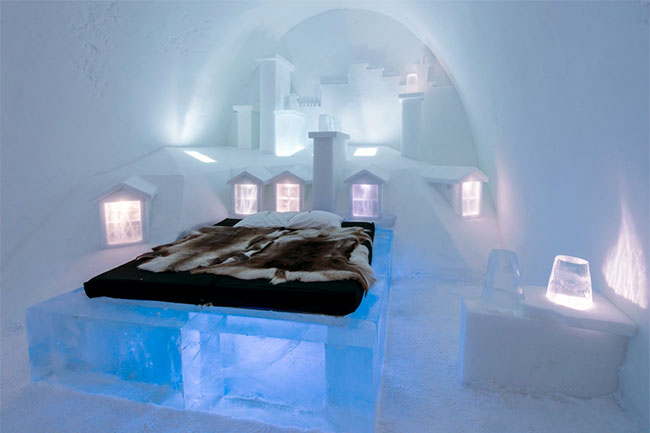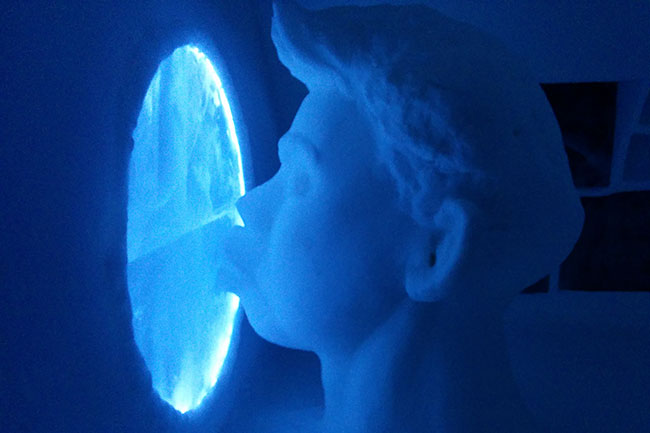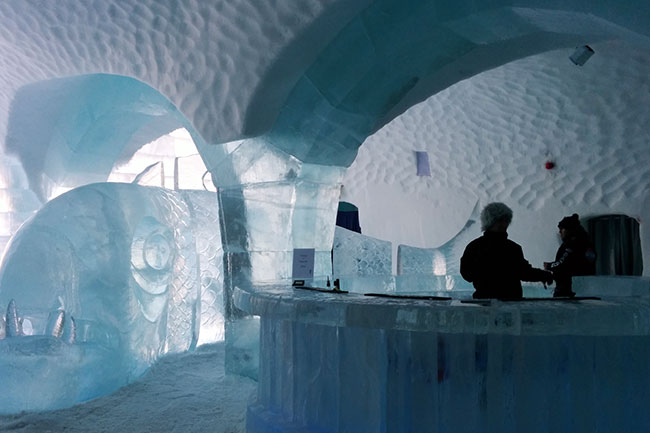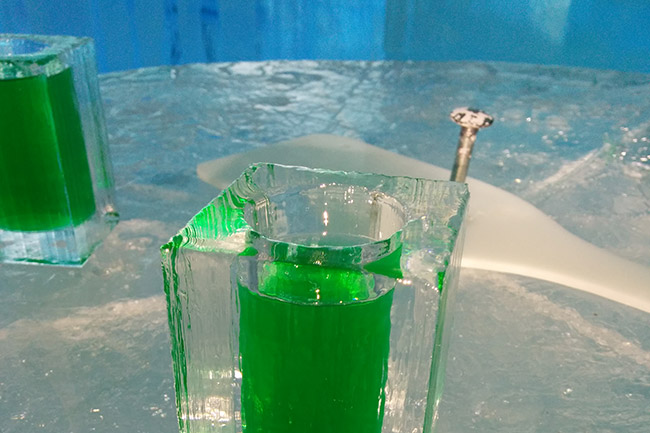Jukkasjärvi is the nearest town to Kiruna and one of the coolest words of the Swedish language.
My colleagues and I had a day off, so we took bus 501 from Kiruna to Jukkasjärvi, finally planning to visit the Ice Hotel after a busy month in Kiruna.
The Ice Hotel is Kiruna’s main attraction, and the reason thousands of tourists from Eastern Asia and Europe travel all the way to that remote region. Though there are many ice hotels around the globe, the one in Jukkasjärvi is the original one.
The whole structure is made of ice, and so it melts away and returns to Mother Nature every spring and is built again every winter.


The Ice Hotel
The Ice Hotel has two parts: the cold and the warm buildings. The warm building houses the reception, the restaurant, living room and the warm bedrooms (cozy rooms from 1725 SEK a night).
The cold side of the hotel is divided into an ice chapel, an ice bar and the cool rooms: snow rooms (2500 SEK), ice rooms, art suites and deluxe suites.
If you wish to splurge, a night at an art suite starts at 4200 SEK and the deluxe suit is only 8500 SEK. You can make a booking at Ice Hotel here.
There are more affordable hotels in Kiruna.
The bar, corridors and art suites are filled with small and large sculptures from tens of artists from around the world. Every year, a new batch of ice artists gather in Jukkasjärvi and sculpt their own art suites.
This way, every art suite is completely unique and an awesome sight: polar bears dancing in a club, subway coaches, dreamy landscapes, giant sushi, unicorns and crazy structures of all sorts.
On the other hand, the snow or ice rooms (the “cheap” ones) consist of a bed structure and simpler room decoration. Since the cheapest room in the hotel was way beyond my budget, I did not even consider staying the night there.
For those who wish to do so, note that rooms have no real doors, and make sure to consider whether one night sleeping on ice is worth the money; given you can camp on any nearby frozen lake for free, and maybe sleeping in an ice room is not that exciting anymore after the first couple of hours.
You can explore the hotel as a visitor for an entrance fee of about 280 SEK for adults (university students of any country pay only 200 SEK, so make sure to bring your university’s ID card).
This ticket includes a really nice tour where the ins and outs of building an ice hotel are revealed and you can ask any questions you have.
Building an hotel made of ice
The process is rather mind-blowing: blocks of ice are harvested from the river in spring, and so over 100,000 tons of ice and 30,000 tons of snow are kept in a production hall.
The snow is used for building the core structure of the hotel, and the ice blocks are used for everything else.
Artists arrive in Jukkasjärvi around November, and that’s when the construction process starts. It is a gradual process, so some sections are not open to the public until January, when the hotel is completed.
Come spring again, the hotel melts away and the ice for next year is harvested. Walls and roofs are built in a way that the gradual melting process doesn’t cause the rooms to cave in, but rather gently melt down towards the sides.
The Ice Bar
The Ice Bar is a great place to chill in and indulge in colorful cocktails served on glasses made of ice (which you can smash to the ground outside, but you shouldn’t).


The (frozen) river
There’s a wide, frozen river surrounded by tundra right behind the hotel. This is the Torne River where the ice is harvested.
If you have never run on a frozen body of water, enjoy yourself here! It’s also the perfect place for a kick sled race with your friends; a bunch of kick sleds are spread all over the place for visitors to use freely.
When the Sun is still holding up, right above the horizon of trees at the other side of the river, it makes for beautiful photographs. Additionally, a Sami tent and a replica of a real, large Sami sled are found near the river for visitors to have fun around as well.
All in all, this palace of ice is a must experience for anyone travelling through Lapland in the winter. The entrance fee hurts a bit, but you can’t really pass up the chance to see this unique piece of art.
Besides the hotel, Jukkasjärvi is home to a reindeer park where you can closely interact with reindeer, go on wilderness tours and stay at one of their cabins. The park also serves as a center for Sami culture. The humble town also has a church built in 1607.
Disclosure on affiliate links: This article contains affiliate links. If you make a purchase or a booking through them, I receive a comission at no extra cost to you. This comission helps me keep this site up and running.